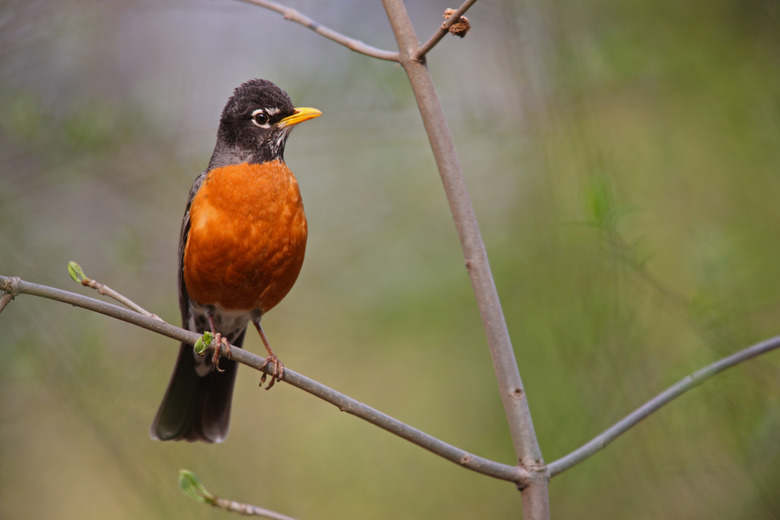Facts About The Wisconsin State Bird - American Robin
Wisconsin school children selected the American robin as the Wisconsin state bird during the 1926-1927 school year. In 1949, state lawmakers made it official. Welcomed as a harbinger of spring, robins actually seldom migrate outside of their breeding area — even in winter. The Wisconsin state bird feels at home in a variety of settings, including backyards, meadows, woods and cities.
In this post, we're going over some common robin bird facts, details about the robin and robin bird meaning/symbolism.
Robin Bird Facts: Scientific Name
Robin Bird Facts: Scientific Name
The American robin's scientific name is Turdus migratorius. In the genus and family of thrushes, it's closely related to birds like the forest rock thrush, bluebirds, redwings, the pale thrush, and many more.
As you might be able to tell from the name, it's considered a migratory songbird. One of the lesser known robin bird facts is that there are actually seven subspecies of the American robin that are loosely defined/classified based on the area they live in.
Physical Characteristics
Physical Characteristics
Let's start the robin bird facts with what robins look like. Robins grow up to about 11 inches in length, the largest of the North American thrushes. Grayish brown in color, with an orange breast, a dark head and a white belly, robins are easy to spot.
Females are slightly more subdued in color. Males produce a series of notes that have a caroling rhythm, and they typically only sing during the breeding season. Either sex issues an alarm call when startled or when danger approaches.
Feeding Habits
Feeding Habits
Robins vary their diets throughout the day, preferring earthworms in the morning and switching to fruits in the afternoon. During the breeding season, their diets are more rich in protein, as they consume grasshoppers, snails, ants, spiders and beetles along with worms.
During the winter, when insects and similar prey are difficult to come by, robins eat whatever fruit and berries they can forage. Should they feast on too many honeysuckle berries, however, robins can become intoxicated.
Nesting and Breeding
Nesting and Breeding
Female robins use one wing to press twigs and sprouts of dead grass into cup-shaped nests. Soft mud from worm castings fortify the nest, which the female then lines with soft grass before laying eggs. Robins raise up to three broods each year, typically in the spring and summer months.
Mortality rates for the species is high. Less than half of the nests actually produce fledglings, and only 25 percent of those birds that fledge make it until November. Of those lucky enough to live that long, half survive until the next year.
Predation, pesticide pollution and accidents with motor vehicles all take a toll on robins.
Daily Activities
Daily Activities
Robins hop or run, then remain motionless in one spot as they search for worms and insects. They cock their heads to one side as if listening, but they are actually carefully watching the ground for any movement that indicates food is present.
In the winter, robins spend less time on the ground in search of food and more time in treetops, where they roost in communal groups that can reach into the hundreds.
As spring approaches, these groups disperse, a signal that breeding season is right around the corner. Robins typically stay in the same area all their lives, although they may make very short migrations in spring and fall.
Robin Bird Meaning
Robin Bird Meaning
As we noted earlier, many people view see the appearance of the robin as a sign that spring is coming. Thus, the robin bird meaning has evolved to not only indicate spring, but a general rebirth/renewal symbol.
Others believe that spotting a robin is a sign of good luck or good things to come. Because of their red breast, people also see these creatures as a symbol of red and fiery passion.
Cite This Article
MLA
Korpella, Robert. "Facts About The Wisconsin State Bird - American Robin" sciencing.com, https://www.sciencing.com/wisconsin-state-bird-robin-6576724/. 23 May 2019.
APA
Korpella, Robert. (2019, May 23). Facts About The Wisconsin State Bird - American Robin. sciencing.com. Retrieved from https://www.sciencing.com/wisconsin-state-bird-robin-6576724/
Chicago
Korpella, Robert. Facts About The Wisconsin State Bird - American Robin last modified March 24, 2022. https://www.sciencing.com/wisconsin-state-bird-robin-6576724/
